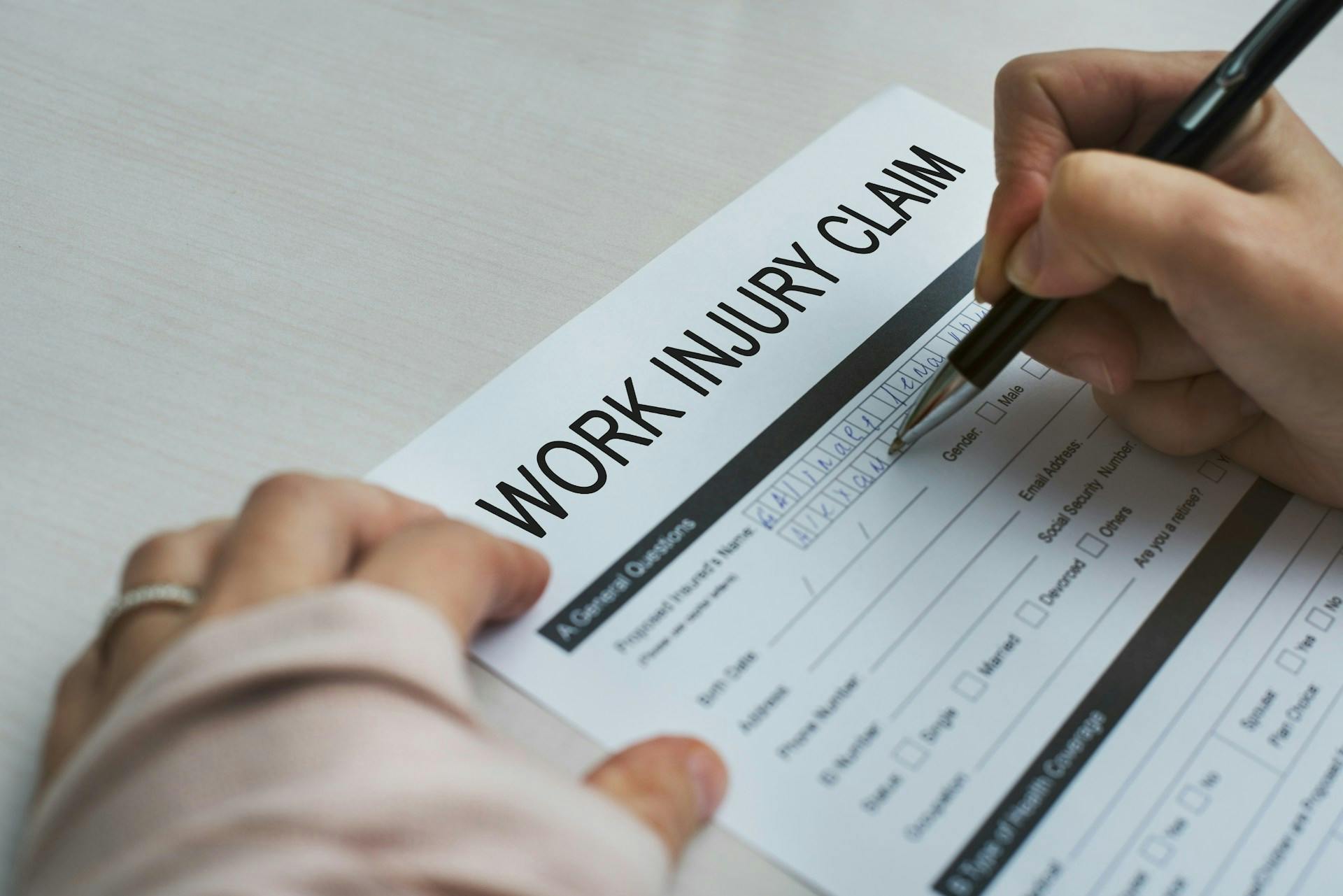How to Create an Effective Incident Report Template (Samples Included)


When workplace incidents are poorly documented or not reported at all, organizations expose themselves to legal risks, safety hazards, and preventable future accidents. Effective incident reporting creates safer environments, maintains compliance with OSHA and other regulations, and demonstrates to employees that their well-being matters. For frontline and non-desk workers especially, having a simple and reliable method to report incidents is critical.
This guide walks you through everything you need to know to create high-quality incident reports, including key elements, best practices, common mistakes to avoid, and ready-to-use templates that streamline the process.
Incident Report Templates You Can Use Right Away
Ready to make your reporting process faster and more consistent?
→ Download our Incident Report Templates and start documenting workplace injuries, near misses, and property damage with confidence. Each form is structured to capture key details, prevent follow-up confusion, and simplify compliance reporting.
Get the full pack today and give your team the tools to report, respond, and prevent incidents more effectively.
What is an Incident Report?
An incident report documents unexpected workplace events that caused or could have caused injury, illness, damage, or other adverse outcomes. Think of it as creating the paper trail that connects what happened today to preventing what might happen tomorrow.
Without effective safety communication, critical details fade from memory, and reporting delays hurt both compliance and safety improvements. Additionally, a lack of efficient reporting tools can negatively impact workforce motivation, as employees may feel their safety concerns are not adequately addressed.
OSHA requires employers to document work-related injuries and illnesses using specific forms and keep these records for at least five years. Solid incident reporting goes beyond compliance. It's the foundation for creating safer workplaces by systematically spotting and fixing hazards.
Types of Incident Reports
Organizations typically track several categories of incident reports:
- Worker injuries: Document physical harm to employees, from minor cuts to serious accidents
- Occupational illnesses: Record conditions resulting from workplace exposure to hazards
- Property damage: Detail harm to equipment, vehicles, facilities, or other assets
- Near misses: Capture "close calls" that could have resulted in harm but didn't
- Environmental incidents: Report spills, releases, or other environmental impacts
- Sentinel events: Document serious adverse outcomes in healthcare settings
Each type needs specific documentation approaches tailored to the incident and relevant regulations.
4 Key Elements of an Effective Incident Report
To ensure an incident report is useful, credible, and actionable, it must include a few non-negotiable elements. Each one plays a role in telling the full story, supporting investigations, and driving meaningful prevention.
1. Fundamental Information
Every incident report starts with these essential details:
- Date, time, and exact location of the incident
- Names and roles of individuals involved
- Names and contact information of witnesses
- Department or work area where the incident occurred
Missing identification information seriously weakens incident reports during legal proceedings and insurance claims.
2. Detailing the Incident
The heart of any incident report is what happened. This account should tell the story in time order, explain conditions before, during, and after, use specific and measurable details instead of vague descriptions, and stick to facts without guesswork. Include relevant environmental conditions that may have contributed to the incident.
Safety professionals recommend using active voice and concrete language. Rather than "The employee was injured when a fall occurred," write "The employee fell 8 feet from the loading dock onto the concrete floor."
3. Witness Accounts
Witness statements add third-party perspectives that boost report credibility. To get the most value, collect statements right after the incident, ask neutral and open-ended questions, note the witness's location and conditions such as lighting or distance, and get signatures and contact information.
Witness statements collected within 24 hours usually contain significantly more accurate details than those collected after three days. Memory fades fast, so capture it while it's fresh.
4. Action and Response
Document both immediate actions and planned follow-up. This includes first aid or medical treatment given, emergency services contacted, temporary controls put in place, corrective actions planned, who's responsible for follow-up, and timeline for implementation.
This documentation shows you responded properly and are committed to prevention. OSHA guidelines stress that corrective actions should fix root causes, not just symptoms.
Best Practices for Writing Effective Incident Reports
Good writing turns an incident report from a routine form into a powerful tool for safety and accountability. Here's how to make every report count.
Use Clear, Precise Language
The quality of writing dramatically affects report effectiveness. Use clear and simple language without jargon, keep a professional and neutral tone, write in complete sentences with proper grammar, and define any technical terms or abbreviations. Avoid emotional or dramatic descriptions that detract from facts, use industry-standard terminology when describing equipment or procedures, and maintain consistent tense throughout the report.
Maintain Objectivity in Documentation
Staying objective is essential for credibility. Document observable facts, not interpretations. Distinguish between what you saw and what others reported. Skip language that assigns blame or suggests negligence, and include multiple perspectives when available. Acknowledge what you don't know rather than guessing, separate observed facts from conclusions drawn from those facts, avoid making premature judgments about causation, and document all potential contributing factors without bias.
Assumptions in reports can create major liability issues and weaken an organization's defense in court.
Add Visual Documentation
Visual elements significantly enhance report clarity. Include photographs from multiple angles when possible, add diagrams showing the incident scene layout, mark up images to highlight relevant features, and include video if available. Create time-sequenced visuals for complex incidents, ensure all visual materials have clear captions and timestamps, maintain a consistent scale for measurements in diagrams, and follow privacy protocols when photographing injured parties.
Reports with visual documentation lead to more effective corrective actions than text-only reports.
Ensure Completeness and Accuracy
Thoroughness prevents costly information gaps. Use standardized forms or checklists to ensure all elements are covered, have a second person review the report for completeness, and document when information is unknown or unavailable. Include negative findings (what didn't happen) when relevant, record environmental conditions such as lighting, weather, or noise levels, note the operational status of any machinery involved, document all personal protective equipment in use, and record training records and qualifications of the involved personnel.
Consistent safety protocols communication among all team members enhances the accuracy and completeness of incident reports.
Submit and Distribute Timely Reports
The report's value diminishes with delay. Submit initial reports within 24 hours of the incident, update preliminary reports as new information becomes available, and distribute reports to all stakeholders with need to know. Maintain confidentiality appropriate to the sensitivity of the incident, implement a clear escalation path for serious incidents to ensure that critical information is communicated promptly, archive reports systematically for trend analysis, create a standardized distribution workflow to ensure proper notification, and schedule follow-up reviews to verify corrective actions.
Checklist for Incident Report Elements
Use this checklist when reviewing incident reports:
- Date, time, and specific location recorded
- All involved persons identified with roles
- Clear chronological description provided
- Incident type properly classified
- Injuries or damage specifically described
- Witness statements collected and attached
- Supporting evidence (photos, videos) included
- Root causes identified through investigation
- Immediate response actions documented
- Corrective measures specified with timeline
- Report submitted within required timeframe
- Information complete with no obvious gaps
Common Pitfalls and How to Avoid Them
Even with good intentions, many incident reports suffer from recurring issues that weaken their effectiveness. Below are the most common pitfalls and how to prevent them.
Lack of Specific Details
Vague descriptions make it difficult to understand what happened, which limits the ability to take meaningful corrective action. A report that says "an employee got hurt using a machine" is too general to be useful. A more effective version would read, "Operator Jane Smith sustained a 2-inch laceration to her right index finger when her hand contacted the unguarded belt drive on Press #4."
Training report writers to consistently include the who, what, when, where, and how, along with specific times, measurements, and exact locations, helps eliminate this issue. Using structured templates that prompt for these details ensures nothing important is overlooked.
Delayed Reporting
When incident reports are written days or even weeks after the event, critical information can be lost. Evidence may no longer be available, and witness memories fade quickly. For example, a slip-and-fall incident reported ten days later becomes harder to verify if the spill has already been cleaned and no visual documentation exists.
The solution is to implement mobile-friendly tools that allow immediate reporting, even from the job site. Organizations should also establish clear expectations for submitting reports within 24 hours and hold team members accountable for timely documentation.
Subjective Language and Blame Assignment
Reports that include opinions, assumptions, or early conclusions about fault can compromise investigations and create legal risk. Phrasing such as "the worker carelessly ignored safety procedures" introduces bias, while a neutral statement like "the worker was not wearing the required safety harness at the time of the fall" sticks to observable facts.
Training writers to use objective language and avoid blame is critical. Establishing a peer review process can help catch and remove biased or speculative language before reports are finalized.
Incomplete Root Cause Analysis
Identifying "worker error" as the cause of an incident without digging deeper often leads to ineffective solutions. A more thorough approach investigates why the error occurred in the first place: was there insufficient training, unclear procedures, or environmental factors like fatigue?
Applying structured root cause analysis tools such as the "5 Whys" or Fishbone diagrams helps identify both immediate and systemic contributors. This process ensures that corrective actions address the real source of the problem, not just the symptoms.
Missing Follow-Up Documentation
Reports that stop at describing the incident and proposed fixes often fall short when it comes to accountability. Without documenting who is responsible for each corrective action, when it will happen, and how success will be measured, there's no way to ensure follow-through.
For example, stating "additional training will be provided" is not enough. Instead, reports should specify the training topic, responsible trainer, target audience, schedule, and method for evaluating results. A linked action-tracking system can help monitor progress and ensure that every step is completed.
Examples of Poorly Written Incident Reports
Example 1: Vague and Subjective
"An employee was injured today because they weren't being careful. They slipped on something wet and hurt themselves pretty badly. This wouldn't have happened if people followed the rules about cleaning up spills immediately. The worker was careless and will be reminded about safety protocols."
This example shows multiple issues: it assigns blame, lacks specifics, includes assumptions rather than facts, and makes subjective judgments without evidence.
Example 2: Missing Critical Information
"John had an accident with the forklift yesterday afternoon. The load fell and damaged some inventory. We'll need to be more careful with the forklifts in the future."
This report fails to provide specific time, location, sequence of events, injuries (if any), witnesses, immediate actions taken, or meaningful corrective measures.
Example 3: Excessive Technical Jargon
"At approximately 14:30 hours, the operative engaged in utilization of the Class III hydraulic transference apparatus when the system experienced rapid decompression, resulting in nullification of load-bearing capacity. Resultant traumatic impaction occurred to lower appendage extremities."
This report uses unnecessarily complex language that obscures what happened, making it difficult for many stakeholders to understand the incident.
Example 4: Premature Conclusion Without Investigation
"Employee Maria Rodriguez violated safety protocol 5.2 by reaching into the packaging machine, causing her hand injury. This was clearly operator error as the machine was functioning properly. Disciplinary action is recommended."
This report jumps to conclusions about the cause and assigns blame without a proper investigation of why the employee reached into the machine or whether guards or interlocks failed.
Learning from Well-Written Incident Report Samples
Example 1: Workplace Slip and Fall
"On June 12, 2023, at approximately 10:15 AM, Warehouse Associate James Smith slipped and fell while walking through Aisle 7 of the distribution center. Smith reported that he did not see the 3' x 4' puddle of water on the concrete floor before stepping into it. The fall resulted in Smith landing on his right side. First Aid Responder Maria Johnson arrived at 10:18 AM and observed swelling to Smith's right wrist. Smith was transported to City Urgent Care at 10:45 AM. Maintenance Supervisor Roberto Diaz cordoned off the area and cleaned the spill by 10:25 AM. The source of the water was identified as condensation dripping from overhead cooling pipe P-103. Maintenance has scheduled pipe insulation installation for June 13."
This report gives specific details, stays objective, documents the response, identifies the root cause, and outlines corrective action.
Example 2: Machine Guarding Incident
Incident Date/Time: March 15, 2023, 2:30 PM
Location: Manufacturing Plant B, Production Line 3, Stamping Station #2
Involved Employee: Thomas Chen, Machine Operator, Employee ID #45892
Description: While operating the Model XL-5 metal stamping press, Operator Chen was preparing to clear a material jam. He turned off the machine using the main power switch but did not follow LOTO procedure #PR-203 to dissipate stored energy. When Chen reached into the die area, the upper die unexpectedly descended approximately 4 inches due to residual hydraulic pressure, stopping 1 inch above Chen's left hand. No contact or injury occurred.
Immediate Actions: Supervisor Williams immediately stopped all operations on Line 3. Maintenance Technician Garcia completed full lockout/tagout of the machine at 2:35 PM. Safety Manager Lopez conducted a toolbox talk with all line operators on proper LOTO procedures at 3:00 PM.
Root Causes Identified: The machine's hydraulic system lacked a pressure relief valve that automatically activates when the main power is turned off. The LOTO training for line operators did not adequately emphasize the specific hazards of stored energy in hydraulic systems. Visual reminders about stored energy hazards were not posted on the equipment.
Corrective Actions: Maintenance will install pressure relief valves on all hydraulic presses by March 20, 2023 (Responsible: J. Martinez). Training department will revise LOTO training with specific modules on stored energy by April 1, 2023 (Responsible: S. Patel). Safety department will create and install visual reminders about stored energy on all applicable equipment by March 25, 2023 (Responsible: T. Lopez).
This report clearly documents the near-miss incident with specific details, immediate actions taken, a thorough root cause analysis, and specific corrective actions with responsible parties and completion dates.
Example 3: Chemical Exposure Incident
Incident Date/Time: September 8, 2023, 11:23 AM
Location: Building C, R&D Laboratory, Room 205
Personnel Involved: Dr. Aisha Johnson (Chemist), Kevin Park (Lab Technician)
Incident Type: Chemical exposure
Description: During a routine transfer of hydrochloric acid (37% concentration, 500ml) from the storage container to the beaker, the glass beaker cracked, releasing approximately 200ml of acid onto the lab bench and splashing approximately 50ml onto Dr. Johnson's lab coat and right forearm. Dr. Johnson was wearing a standard lab coat, nitrile gloves, and safety glasses, but no face shield. Lab Technician Park was present at the adjacent workstation.
Immediate Response: Dr. Johnson immediately proceeded to the emergency shower and activated it at 11:24 AM, removing contaminated lab coat while under the water stream. Park contacted emergency response at 11:25 AM and retrieved the first aid kit. Emergency shower was used for 15 minutes to rinse affected skin area. Safety Officer Wilson arrived at 11:30 AM and escorted Dr. Johnson to the on-site clinic. Exposure resulted in minor (first-degree) chemical burn to a 2" x 3" area of right forearm. On-site physician Dr. Rivera treated the injury, no hospitalization required. Affected laboratory area was evacuated and Chemical Spill Response Team neutralized and cleaned the spill by 12:15 PM.
Root Cause Analysis: Primary cause was determined to be the use of a beaker with an undetected hairline crack. Secondary causes included bench-level risk assessment that did not identify the need for face shield during this particular transfer operation, and pre-transfer inspection of glassware was not performed according to Lab Safety Procedure LSP-42.
Corrective Actions: Implement mandatory glassware inspection protocol before all chemical transfers involving corrosives (Responsible: Lab Manager Chang, Due: Sept 15, 2023). Revise chemical handling procedure to require face shields during all transfers of corrosives regardless of volume (Responsible: Safety Manager Gonzalez, Due: Sept 20, 2023). Schedule refresher training on chemical transfer protocols for all laboratory personnel (Responsible: Training Coordinator Singh, Due: Oct 1, 2023). Review and update bench-level risk assessments for all routine chemical procedures (Responsible: Department Heads, Due: Oct 15, 2023).
Follow-up Verification: Safety Committee will verify implementation of all corrective actions at the November 5, 2023 quarterly review meeting.
This report thoroughly documents a chemical exposure incident, including precise details about the chemicals involved, personal protective equipment in use, emergency response actions with timestamps, medical treatment, specific root causes, and comprehensive corrective actions with clear accountability.
Modern Tools for Real-Time Incident Reporting
Traditional incident reporting methods like paper forms, email chains, and desktop-only software create major barriers, especially for non-desk workers. These systems often result in reporting delays, incomplete documentation, and low participation. When workers must wait until they return to a central office or access a computer, critical details are often forgotten, or the report never gets filed at all.
Modern SMS-based reporting platforms offer a faster, more accessible alternative. By allowing employees to report incidents immediately using their mobile phones, without requiring downloads or internet access, these tools dramatically improve reporting speed and accuracy. For example, a delivery driver who discovers damaged goods can instantly text in a report with photos, rather than waiting until the end of their shift. A construction worker who witnesses a near-miss can document it in real time, before the scene changes or their memory fades.
The benefits of mobile-first, SMS-enabled incident reporting include:
- Universal accessibility: Every worker can report using their existing phone
- Real-time documentation: Reports submitted immediately while details are fresh
- Photo and video evidence: Visual documentation captured directly from the scene
- Automated workflows: Alerts automatically trigger to supervisors
- Centralized data management: Support for trend analysis and compliance
- Enterprise-grade security: Encryption and access controls protect sensitive information
These capabilities transform incident reporting from a reactive paperwork task into a proactive safety tool that protects workers and reduces organizational risk.
Report Incidents Faster with Yourco
Better incident reporting starts with making it easy for every employee to document what happens when it happens. No complicated forms, no waiting until the end of the shift, just fast and reliable communication that keeps your team safe.
Yourco gives your frontline workers the ability to report incidents via text message, right from their phone. They can snap a photo of the scene, describe what happened, and send it instantly to the right people. Every report is timestamped and logged automatically, creating a clear record that supports investigations, compliance, and continuous improvement.
With Yourco's centralized dashboard, safety managers can track trends, spot recurring issues, and take action before small problems become bigger ones. Whether you're managing a warehouse, construction site, manufacturing plant, or logistics fleet, Yourco ensures nothing slips through the cracks.
Try Yourco for free today or schedule a demo and see how the right communication tool can transform your workplace safety.
Frequently Asked Questions
What should I do if an employee refuses to fill out an incident report?
Start by understanding their concerns. Many workers worry about blame or find the process too complicated. Emphasize that reports are about prevention, not punishment. Make reporting as simple as possible by offering text-based submissions that don't require forms. If refusal continues, document it and escalate to HR or management to ensure the incident is still properly recorded.
How long should we keep incident reports on file?
OSHA requires employers to retain injury and illness records for at least five years. Many organizations keep reports longer to support trend analysis and legal defense. Check with your legal team to confirm requirements for your industry, and consider digital storage systems that make long-term archiving easier.
Can incident reports be submitted anonymously?
While anonymous reporting can encourage employees to share safety concerns, most formal incident reports require identification to support investigation and follow-up. Consider offering a separate anonymous channel for general safety feedback while maintaining a standard process with employee identification for formal documentation that protects confidentiality.
What's the difference between an incident report and an accident investigation?
An incident report is the initial documentation capturing facts immediately after an event: who, what, when, where, and immediate actions taken. An accident investigation is a comprehensive follow-up process that analyzes root causes, interviews witnesses, examines equipment, and develops corrective actions. The report ensures nothing is forgotten, and the investigation ensures you understand why it happened and how to prevent recurrence.





